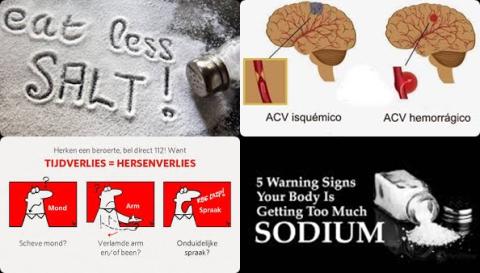
Objectives:
The association of high sodium intake with risk of stroke has been accepted. But considering the proposed J/U-shaped association between sodium intake and risk of all-cause mortality, the shape of the dose-response relationship has not been determined yet. Therefore, this review article has been conducted.
Is there a dose-response association of dietary sodium and sodium-to-potassium ratio with risk of stroke in adults aged 18 years or older?
Study design:
This review article included 14 prospective cohort studies, 1 case-cohort study and 1 case-control study with a total of 261,732 participants, of which 10,150 cases of stroke.
Results and conclusions:
The investigators found a significantly increased risk of 6% [pooled RR = 1.06, 95% CI = 1.02 to 1.10, I2 = 60%, n = 14 studies] for stroke for a 1 gr/d increment in dietary sodium intake.
The investigators found a significantly increased risk of 22% [pooled RR = 1.22, 95% CI = 1.04 to 1.41, I2 = 60%, n = 5 studies] for stroke for a one-unit increment in dietary sodium-to-potassium ratio (mmol/mmol).
The investigators found the risk of stroke increased linearly with increasing dietary sodium intake and also along with the increase in dietary sodium-to-potassium ratio.
The investigators found no evidence of a J/U-shaped association in the analyses of total stroke, stroke incidence and stroke mortality.
The investigators found high sodium intake was associated with a somewhat worse prognosis among Asian countries as compared to westerns.
The investigators concluded that higher dietary sodium intake and higher dietary sodium-to-potassium ratio are associated with a higher risk of stroke in adults aged 18 years or older. Reducing dietary sodium-to-potassium ratio can be considered as a supplementary approach in parallel with the decrease in sodium intake in order to decrease stroke risk.
Original title:
Dietary sodium, sodium-to-potassium ratio, and risk of stroke: A systematic review and nonlinear dose-response meta-analysis by Jayedi A, Ghomashi F, […], Shab-Bidar S.
Link:
https://www.ncbi.nlm.nih.gov/pubmed/29907351
Additional information of El Mondo:
Find more information/studies on review article/significantly, sodium, potassium and cardiovascular diseases prevention right here.
Sodium is a component of salt. Thus, a high sodium intake means a high salt intake.
A high salt diet means, practically, a diet with a lot of products with minimum 0.3 gram salt per 100 kcal.
A low salt diet means, practically, a diet with a lot of products with maximum 0.2 gram salt per 100 kcal. These products meet a low salt diet.